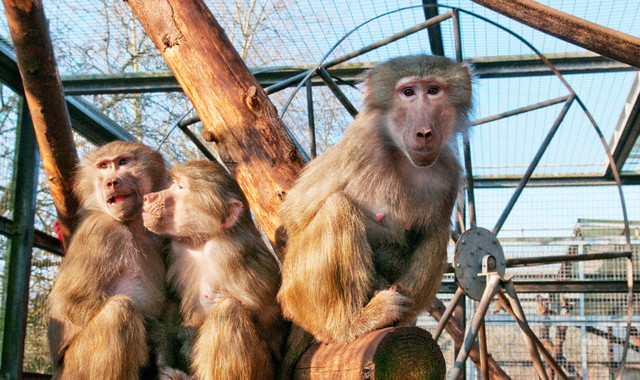In all countries of the EU, the number of experimental animals is recorded annually according to a uniform counting method. In Germany, there are precise regulations for this. Each scientific institution reports the corresponding figures to the regionally responsible authority. This authority passes the figures on to the Federal Institute for Risk Assessment (BfR), which reports the figures to the EU and publishes the national figures for a given year on its website towards the end of the following year. The information initiative Tierversuche verstehen analyzes these figures, provides them with extensive background information and publishes the Kompass Tierversuche annually. It can be downloaded here free of charge (only in German).
The authority responsible for the DPZ is the Landesamt für Verbraucherschutz und Lebensmittelsicherheit (LAVES). Every year on March 31, the DPZ reports to this authority the species and number of experimental animals used in the previous year. In accordance with the regulations, the animals that left an experimental project in the corresponding year are counted for this purpose. An experimental project may begin and be completed in the same year, or it may continue over a longer period of time. In this case, too, the experimental animals are counted in the year in which they leave the experimental project. For the year 2023, DPZ reported 198 experimental animals. Of these, 94 were primates and 104 were animals of other species (see figure below).
If histological or pathological examination is required at the end of an animal study as part of the scientific question, the animals are euthanized painlessly. Such euthanasias for scientific reasons are part of the animal experiment application and are approved by the authorities within this framework. If euthanasia for scientific reasons is not necessary, the animal will be transferred to animal husbandry after a final veterinary examination. It may participate in another experimental project at a later date if approved by LAVES.
The primate species kept at the DPZ and used in experiments (rhesus macaques, common marmosets, long-tailed macaques and baboons) are used in experiments of great scientific importance and only if the experiment cannot be carried out with a less developed animal species. These include, in particular, studies of infectious diseases, but also experiments in the field of brain research, such as grasping experiments or studies on visual perception and attention, as well as studies on stem cell and embryonic development. You can learn more about the primate species at the DPZ here.
The rodents (mice and rats) as well as the rabbits are mainly examined by means of imaging techniques. The magnetic resonance imaging (MRI) used for this purpose allows non-invasive, i.e. non-destructive, insights into the structure and function of the living organism. This does not require any surgical intervention on the animal. With the help of the high-resolution images, the brain and other organs inside the body, such as the beating heart, and their diseases can be studied in animal models and MRI diagnostics in humans can be improved. In rabbits used in 2023, MRI was used to study the influences of extracorporeal circulation using a heart-lung machine on blood flow and vessel walls. Heart-lung machines are successfully used, for example, in major heart surgery and severe coronary disease, but they also carry significant risks for the patient. The studies conducted are intended to help reduce these risks in the future. You can find out more about research on and using MRI here.
Pigs are used in very small numbers (one animal each in 2021 and 2022) at the DPZ for research projects on xenotransplantation. Here, organs or tissues from species that are developmentally far removed from each other (for example, from pigs) are transferred to primates (rhesus monkeys, baboons, later humans) in order to develop alternatives to human tissue and organ transplantation. The organs of pigs are physiologically and anatomically very similar to those of humans. They are therefore used for research into new tissue and organ replacement techniques. Learn more about xenotransplantation here.




